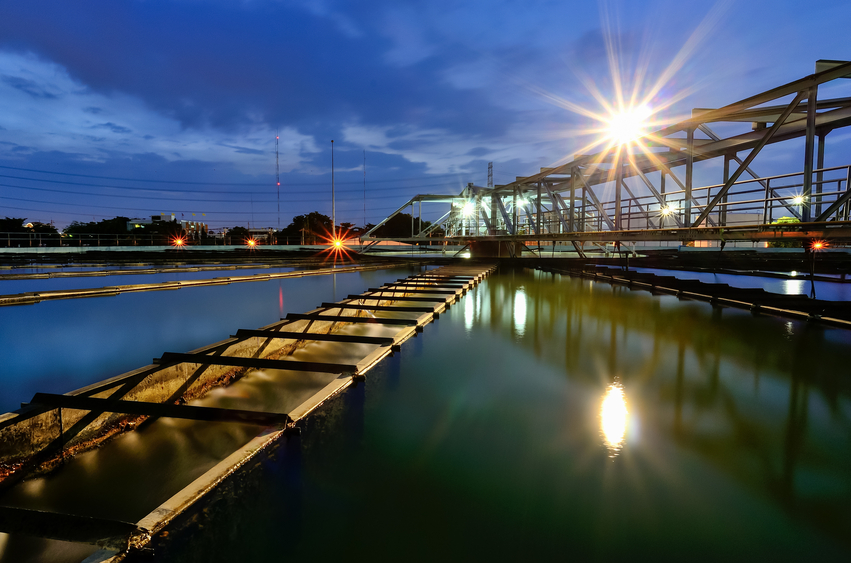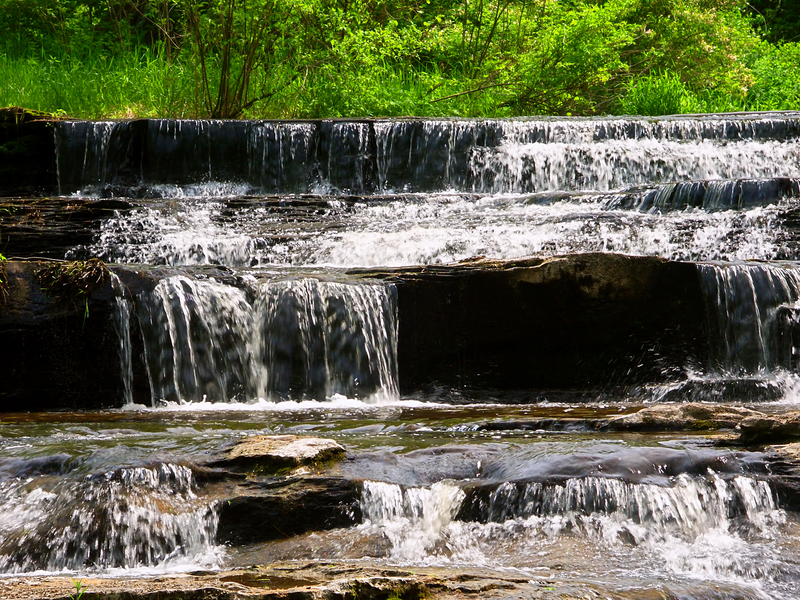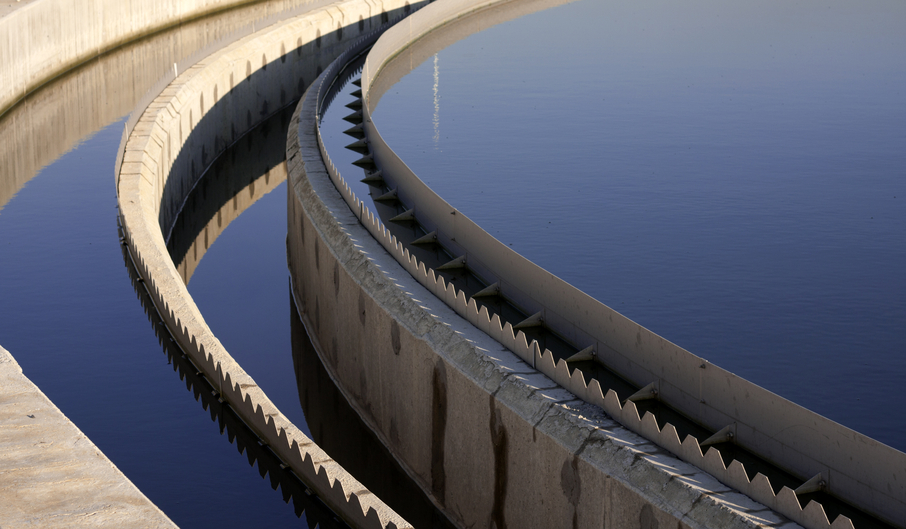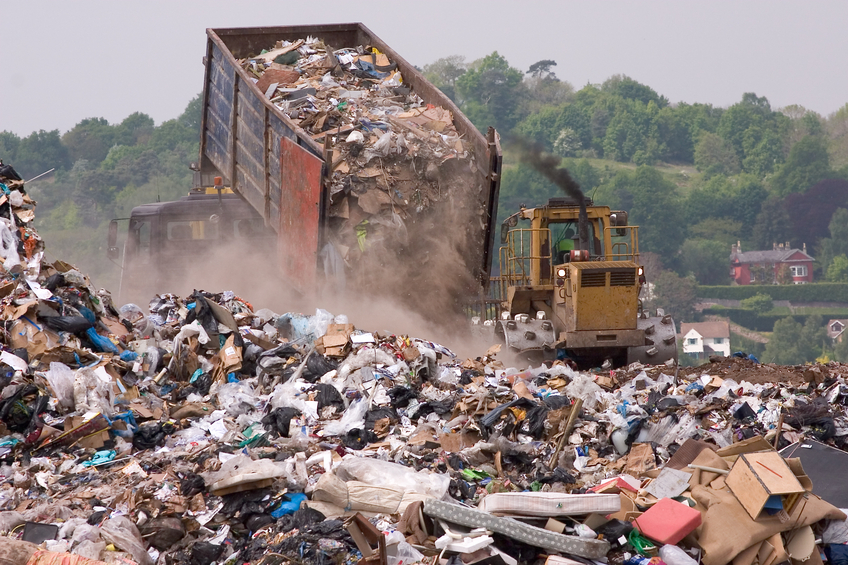Wastewater Engineering 24 PDH Discount Package 2
Courses in this Package
An Introduction to Advanced Wastewater Treatment (C04-020)
An Introduction to Hydraulic Design of Sewers (C02-031)
An Introduction to Industrial Wastewater Collection and Treatment (C03-038)
An Introduction to Secondary Wastewater Treatment (C04-022)
An Introduction to Sludge Handling, Treatment and Disposal (C04-021)
An Introduction to Small Flow Waste Treatment Systems (C02-028)
An Introduction to Trickling Filter Wastewater Treatment Plants (C02-055)
An Introduction to Wastewater Collection and Treatment in Cold Regions (C03-035)

This online engineering PDH course will introduce you to advanced wastewater treatment processes that provide higher quality wastewater discharge than achievable with primary and secondary treatment alone. You will learn about polishing ponds, post-aeration, microstraining, filtration, activated carbon adsorption, phosphorous removal, land application systems, nitrification, denitrification, three-stage biological systems, and anaerobic contact processes.
This 4 PDH online course is intended for civil, environmental and chemical engineers as well as construction professionals seeking an introduction to advanced wastewater treatment.
This PE continuing education course is intended to provide you with the following specific knowledge and skills:
- Learning about the sequence of wastewater treatment processes
- Learning typical application data for advanced wastewater treatment operations and processes
- Learning about polishing ponds
- Learning about post-aeration
- Learning about the microstraining process
- Learning the design factors to be used when using microstrainers
- Learning about hydraulic control of microscreening units
- Learning about the basic design parameters for filtration processes
- Learning about filtration media sizes and filtration rates
- Learning about multi-media filtration
- Learning about activated carbon adsorption
- Learning about pulsed bed activated carbon adsorption systems
- Learning about activated carbon quantities and adsorption capacity
- Learning acceptable hydraulic loadings for activated carbon adsorption processes
- Learning the chemical bases for phosphorus removal
- Learning about phosphorus removal by mineral addition using aluminum
- Learning about phosphorus removal by mineral addition using iron
- Learning about phosphorus removal using lime treatment
- Learning about land application systems
- Learning about nitrification and denitrification processes
In this professional engineering CEU course, you need to review the course document titled, "An Introduction to Advanced Wastewater Treatment".
Upon successful completion of the quiz, print your Certificate of Completion instantly. (Note: if you are paying by check or money order, you will be able to print it after we receive your payment.) For your convenience, we will also email it to you. Please note that you can log in to your account at any time to access and print your Certificate of Completion.

This online engineering PDH course will introduce you to the principles of hydraulic design of sanitary sewers. You will learn how to calculate quantities of wastewater, the approach to design of gravity and depressed sewers, required pumping capacity, hydrogen sulfide gas control, and sewer system features such as manholes, building connections, cleanouts, and pumping stations and equipment.
This 2 PDH online course is applicable to civil engineers and construction professionals seeking to understand the fundamentals of design of sewer systems. This course will provide civil engineers and construction professional an introduction to the terminology, fundamentals and methodologies for the hydraulic design of sanitary sewer systems.
This PE continuing education course is intended to provide you with the following specific knowledge and skills:
- Learning how to evaluate the contributing population for the sewer system
- Learning about Average Daily Flow, Average Hourly Flowrate, Peak Diurnal Flowrate, and Extreme Peak Flowrate
- Learning how to calculate extreme peak flowrates from average flowrates
- Learning how to accommodate groundwater infiltration into the sewer system when designing the sewer system
- Learning how the Manning formula is used in design of gravity sewers
- Learning about acceptable values for the roughness coefficient in the Manning formula
- Learn about acceptable design velocities for gravity sewers
- Learning the 10 parameters that need to be identified and quantified after a preliminary layout for the system has been established
- Learning the importance of critical flow in gravity sewer design
- Learning about velocity and flow analysis of depressed sewers
In this professional engineering CEU course, you need to review the course document titled, "An Introduction to Hydraulic Design of Sewers".
Upon successful completion of the quiz, print your Certificate of Completion instantly. (Note: if you are paying by check or money order, you will be able to print it after we receive your payment.) For your convenience, we will also email it to you. Please note that you can log in to your account at any time to access and print your Certificate of Completion.

This online engineering PDH course provides an introduction to the technology, systems and design practices for industrial wastewater collection and treatment. Industrial waste should be collected in a manner that avoids unsafe conditions to personnel, equipment and facilities. Industrial wastes should either be pretreated sufficiently to be accommodated in a domestic wastewater collection and treatment system, or provided with a separate collection and treatment system.
Bench scale or pilot plant treatability studies to evaluate the effectiveness of the proposed physical, chemical or biological unit processes may be needed for the design of industrial waste treatment facilities. These studies should be conducted on the waste stream, if available, or on an equivalent waste stream at another facility. As a minimum, jar tests should be conducted prior to chemical process design to determine the reactor design criteria, process control and operating strategy, sludge production, and sludge characteristics.
Using new membrane technologies, consideration must be made for brine generation that can be nonhazardous and discharged directly to a publicly owned treatment works (POTW). Pilot and bench scale studies should simulate the complete series of proposed unit process treatment steps using the same wastewater sample. This will identify any adverse effects of upstream treatment processes on subsequent treatment steps.
This 3 PDH online course is intended for civil and environmental engineers and other design and construction professionals seeking an introduction to the principles of collection and treatment of industrial wastewater.
This PE continuing education course is intended to provide you with the following specific knowledge and skills:
- Understanding the characteristics of conventional and toxic pollutants
- Learning about effluent discharge limits
- Learning about pretreatment regulations
- Learning about isolation and collection systems for chrome and phenol containing wastewaters, for cyanide containing wastewaters, and for mixed acid and alkaline-content wastewaters
- Knowing the approaches to flow and load equalization
- Understanding the principles of equalization basin design and construction
- Learning about limits on biological treatment processes
- Understanding the basics of bioassay procedures
- Knowing the fundamentals of gravity and pressure collection systems for industrial wastewater
In this professional engineering CEU course, you need to review the course document titled, "An Introduction to Industrial Wastewater Collection and Treatment".
Upon successful completion of the quiz, print your Certificate of Completion instantly. (Note: if you are paying by check or money order, you will be able to print it after we receive your payment.) For your convenience, we will also email it to you. Please note that you can log in to your account at any time to access and print your Certificate of Completion.

This online engineering PDH course will introduce you to processes and equipment for secondary treatment of wastewater. You will be introduced to descriptions, functions and design considerations for trickling filter plants, activated sludge plants, and wastewater treatment ponds. You will be introduced to special considerations for wastewater treatment plants in hot and cold climates. You will learn how the secondary treatment processes work together with the preliminary, primary, tertiary and sludge handling processes to form a complete wastewater treatment plant.
Wastewater treatment is usually characterized as consisting of four sequential processes: preliminary, primary, secondary and tertiary treatment.
This 4 PDH online course is intended for civil, environmental and chemical engineers as well as construction professionals seeking an introduction to secondary wastewater treatment.
This PE continuing education course is intended to provide you with the following specific knowledge and skills:
- Understanding design basis and criteria for trickling filter plants
- Learning about the different dosing intervals for different classifications of trickling filters
- Learning about the biochemical oxygen demand (BOD) efficiency of different classifications of trickling filters
- Learn how recirculation increases BOD removal efficiency in high rate trickling filter processes
- Understanding the four common flow diagrams for single-stage and two-stage trickling filter plants
- Understanding why loading rate is the key design factor whether the surface application is continuous, intermittent, constant or varying rate
- Understanding the importance of ventilation in providing aerobic conditions for effective treatment
- Understanding how performance of trickling filters will be affected by temperature changes in the wastewater and filter films
- Learning about design formulas for determining BOD removal efficiencies for single- and two-stage trickling filters
- Understanding the purpose of secondary sedimentation tanks
- Learn about the conventional plug-flow, step aeration, contact stabilization, and completely-mixed activated sludge processes
- Learning about the closed-loop reactor (oxidation ditch) extended aeration process
- Learning about the classifications of wastewater treatment ponds
- Learning about shallow and aerated aerobic ponds
- Learning about aerobic-anaerobic and facultative wastewater treatment ponds
In this professional engineering CEU course, you need to review the course document titled, "An Introduction to Secondary Wastewater Treatment".
Upon successful completion of the quiz, print your Certificate of Completion instantly. (Note: if you are paying by check or money order, you will be able to print it after we receive your payment.) For your convenience, we will also email it to you. Please note that you can log in to your account at any time to access and print your Certificate of Completion.

This online engineering PDH course will introduce you to processes and equipment for handling, treating and disposing of sludge produced by wastewater treatment plants. It covers sludge pumping, thickening, conditioning, dewatering, digestion, storage and final disposition. It also discusses loading parameters for gravity thickeners and operational parameters for air flotation thickeners. This course will provide guidelines for chemical conditioning of sludge; and advantages, disadvantages and shortcomings of filter presses, basket centrifuges, and solid bowl decanter centrifuges. Finally it illustrated the design parameters for aerobic and standard and high-rate anaerobic sludge digesters.
This 4 PDH online course is intended for civil, environmental and chemical engineers as well as construction professionals seeking an introduction to sludge handling, treatment and disposal.
This PE continuing education course is intended to provide you with the following specific knowledge and skills:
- Identifying the characteristics, advantages and disadvantages of the four primary types of sludge pumps
- Recommending pump types for primary, chemical precipitated, trickling-filter, activated, thickened and concentrated sludge
- Learning about gravity and flotation thickening of sludge, as well as the mass loading guidelines for gravity thickeners
- Learning about the operational parameters for flotation thickening of sludge
- Learning how chemical conditioning is used to improve sludge dewaterability and how heat can improve dewaterability of sludge
- Learning about sludge dewatering using a belt filtration press
- Understanding the advantages, disadvantages, shortcomings and solutions to problems that may arise with belt filter presses
- Understanding the design guidelines for sludge drying beds
- Learning about sludge moisture reduction using vacuum filtration
- Learning about sludge dewatering using basket centrifuges or using solid bowl centrifuges
- Understanding the advantages, disadvantages, shortcomings and solutions to problems that may arise with solid bowl decanter centrifuges
- Learning about plate-and-frame filter presses, as well as manual, semi-automatic and automatic controls for filter presses
- Learning about continuous and intermittent batch aerobic sludge digestion, as well as anaerobic sludge digestion
- Understanding the design parameters for aerobic digestion using air, as well as the design parameters for standard- and high-rate anaerobic digesters
In this professional engineering CEU course, you need to review the course document titled, "An Introduction to Sludge Handling, Treatment and Disposal".
Upon successful completion of the quiz, print your Certificate of Completion instantly. (Note: if you are paying by check or money order, you will be able to print it after we receive your payment.) For your convenience, we will also email it to you. Please note that you can log in to your account at any time to access and print your Certificate of Completion.

This online engineering PDH course will introduce you to small flow waste treatment systems such as septic tanks, waterless toilets, filtration and reuse systems, Imhoff tanks, and packaged treatment plants. You will learn about subsurface absorption and how to conduct percolation tests. You will learn how to utilize leaching wells, sand filters, mound systems and other methods of waste disposition. The systems you will be introduced to in this course will generally be applicable to facilities with a waste discharge requirement of less than 1.0 million gallons per day.
This 2 PDH online course is intended for engineers, design professionals, and construction personnel who are interested in gaining an introduction to small flow waste treatment systems.
This PE continuing education course is intended to provide you with the following specific knowledge and skills:
- Learning the population limitations of septic tank systems
- Learning the importance of detention time when using septic tanks
- Learning how subsurface absorption is used in conjunction with septic tanks
- Learning the subsurface soil conditions required to utilize leaching wells
- Learning how to determine soil percolation rates
- Learning about humus composting toilets
- Learning the pros and cons of incineration toilets
- Learning how intermittent sand filters are used to treat waste from Imhoff and septic tanks
- Learning when conditions may dictate use of a mound system rather than a leach field
- Learning the soil and site factors that limit the use of mound systems
In this professional engineering CEU course, you need to review the course document tilted, "An Introduction to Small Flow Waste Treatment Systems".
Upon successful completion of the quiz, print your Certificate of Completion instantly. (Note: if you are paying by check or money order, you will be able to print it after we receive your payment.) For your convenience, we will also email it to you. Please note that you can log in to your account at any time to access and print your Certificate of Completion.

This online engineering PDH course provides an introduction to trickling filter wastewater treatment plants.
Trickling filter plants have been justified by their low initial cost, low operating and maintenance costs, and relative simplicity of operation. Although the effluent from trickling filter plants of earlier design was of poorer quality than that from activated sludge plants, the performance of trickling filters designed more recently is comparable to that of activated sludge plants. Both processes offer certain advantages, with trickling filters providing good performance with minimal operator care and few, if any, energy requirements.
This 2 PDH online course is intended for civil and environmental engineers and other design and construction professionals seeking an introduction to the design and operation of trickling wastewater treatment filters.
This PE continuing education course is intended to provide you with the following specific knowledge and skills:
- Learning about fundamental design data and information for trickling filter processes
- Learning about the recommended depth criteria and application rates for stone media trickling filters
- Learning about recirculation as a recommended method of increasing the biochemical oxygen demand removal efficiency of high-rate trickling filter processes
- Learning about the recommendations for design recirculation rates for high-rate filters
- Learning about hydraulic and organic loading rates and their importance as key design factors whether a surface application is continuous, intermittent, constant rate, or varying rate
- Learning how ventilation provides aerobic conditions for effective treatment
- Learning how the performance of trickling filters will be affected by temperature changes in the wastewater and filter films
In this professional engineering CEU course, you need to review the course document titled, "An Introduction to Trickling Filter Wastewater Treatment Plants".
Upon successful completion of the quiz, print your Certificate of Completion instantly. (Note: if you are paying by check or money order, you will be able to print it after we receive your payment.) For your convenience, we will also email it to you. Please note that you can log in to your account at any time to access and print your Certificate of Completion.

This online engineering PDH course will introduce you to the unique aspects of design and construction of wastewater collection and treatment systems in the arctic and subarctic regions. In addition to gravity collection systems, some detail is included on the use of pressure and vacuum sewers since the flat terrain and permafrost make it difficult to design a conventional gravity sewer system in the
Wastewater characteristics for treatment purposes in the cold regions will generally be different from those in temperate regions, with respect to quantity, quality, and temperature. The total quantity of wastewater discharged at installations in cold regions tends to be very close to the quantity supplied for potable water use since there is little external or industrial use, storm water is usually excluded, and groundwater infiltration is not a factor in the newer insulated and tightly sealed pipe systems. As a result wastewater in the
This 3 PDH online course is intended for civil, environmental and mechanical engineers and other design and construction professionals interested to learn about wastewater collection and treatment systems, facilities and equipment in arctic and subarctic regions.
This PE continuing education course is intended to provide you with the following specific knowledge and skills:
- Learning about temperature considerations in wastewater collection systems in cold regions
- Understanding how low temperature affects wastewater treatment processes
- Learning about special design details recommended for features such as manholes, cleanouts, service connections and pumping stations
- Learning how to employ pressure and vacuum sewerage systems in cold regions
- Understanding how cold temperatures affect preliminary treatment processes such as facultative lagoons
- Learning about design considerations when designing aeration systems in cold regions
- Learning about sludge management in Arctic and Subarctic regions
In this professional engineering CEU course, you need to review the course document titled, "An Introduction to Wastewater Collection and Treatment in Cold Regions".
Upon successful completion of the quiz, print your Certificate of Completion instantly. (Note: if you are paying by check or money order, you will be able to print it after we receive your payment.) For your convenience, we will also email it to you. Please note that you can log in to your account at any time to access and print your Certificate of Completion.